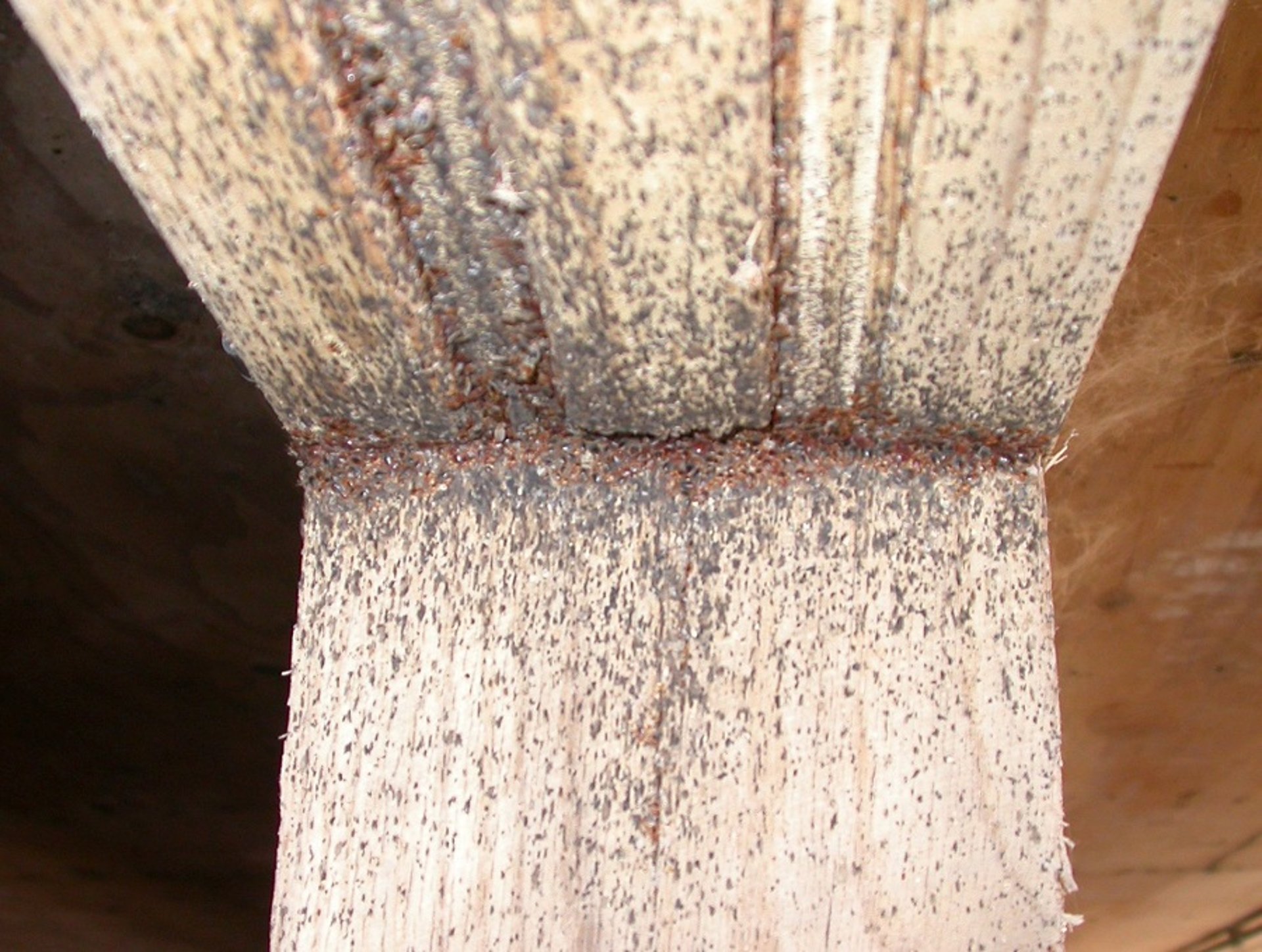Courtesy of Cornell Veterinary Entomology.
Cimex lectularius (bedbug) is a common bloodsucking parasite of people, but it can also feed on many other warm-blooded animals, including poultry. Bedbugs spend most of their time off the host in cracks and crevices, traveling to the host to feed at night. Because of this life history, it is rare in modern caged-laying operations. Bedbugs require a more complex environment (eg, nestboxes) and may become problematic in furnished-cage or cage-free layer facilities, breeding houses, pigeon lofts, etc.
Adult bedbugs are dorsoventrally flattened, dark brown, and about the size of an apple seed. Nymphs are smaller and lighter brown. Bedbug eggs are laid in cracks and crevices and hatch after 4–12 days. The five nymphal instars all blood feed and last 3–10 days each. The entire cycle (egg to adult) requires 24–128 days depending on temperature (30°C is optimal). Bedbugs can survive for weeks to months without feeding. Infestations cause irritation and blood loss to birds. They have not been found to vector any diseases.
If attacked by large numbers of bedbugs, birds may become irritable and anemic. Bites are usually followed by swelling and itching due to injection of saliva into the wound.
Signs of bedbug infestation on poultry include:
bug fecal droppings on eggs and nest boxes
breast and leg skin lesions
reduced egg production
increased feed consumption
Control is best accomplished by thoroughly cleaning the houses, reducing hiding places for the bedbugs, using heat treatments, and/or fumigating the houses.

